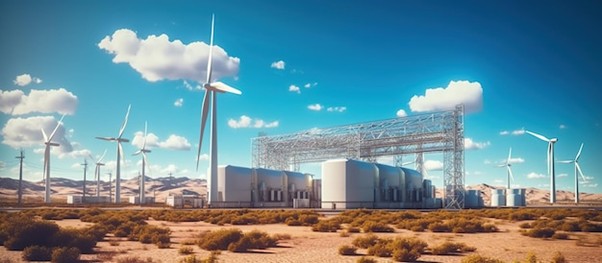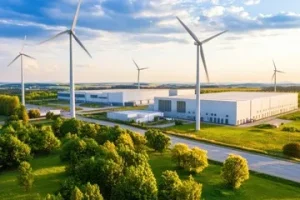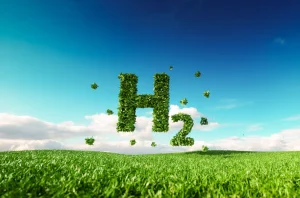An Overview of Hydrogen Production Technologies: Methods and Innovations
In the journey toward a clean, sustainable energy future, hydrogen has emerged as a key enabler of decarbonization across industries, transportation, and power generation. Known as the “fuel of the future,” hydrogen offers a versatile and clean energy solution, producing zero emissions when used. However, the way hydrogen is produced determines its environmental impact and economic feasibility.
From traditional methods like steam methane reforming (SMR) to cutting-edge innovations like green hydrogen production through electrolysis, hydrogen production technologies are rapidly evolving. This blog takes you through the various methods of hydrogen production, their innovations, and the role they play in shaping a cleaner future.
What is hydrogen production?
Hydrogen production is the process of generating hydrogen gas (H₂), which can be used as a clean fuel or chemical feedstock. Since hydrogen doesn’t naturally exist in large quantities as a free gas on Earth, it must be extracted from other substances — most commonly from water (H₂O) or hydrocarbon fuels like natural gas.
- Gray Hydrogen: The Traditional Path
Gray hydrogen is the most widely produced form of hydrogen today. It is generated using steam methane reforming (SMR), where natural gas reacts with high-temperature steam to produce hydrogen and carbon dioxide (CO₂) as a byproduct.
- Advantages: SMR is well-established, cost-effective, and widely deployed globally.
- Challenges: It produces large amounts of carbon emissions, contributing to climate change.
With the world moving toward decarbonization, gray hydrogen’s reliance on fossil fuels makes it unsustainable in the long run. However, its dominance highlights the need for cleaner alternatives.

- Blue Hydrogen: Bridging the Gap
Blue hydrogen represents an improvement over gray hydrogen. It also uses steam methane reforming (SMR) but incorporates carbon capture, utilization, and storage (CCUS) technologies to trap and store the CO₂ emissions, preventing them from entering the atmosphere.
- Advantages: Blue hydrogen reduces carbon emissions significantly compared to gray hydrogen. It uses existing infrastructure, making it easier to scale up production.
- Challenges: The success of blue hydrogen depends on the efficiency and cost-effectiveness of carbon capture technologies. CCUS infrastructure is still under development in many regions.
For countries transitioning toward cleaner energy systems, blue hydrogen acts as a bridge between fossil-fuel-based production and fully renewable solutions.
- Green Hydrogen: The Sustainable Solution
Green hydrogen is produced through electrolysis, a process that uses renewable electricity to split water (H₂O) into hydrogen (H₂) and oxygen (O₂). This method generates zero emissions, making green hydrogen the cleanest and most sustainable option.
Key Innovations in Green Hydrogen Production
- Advanced Electrolyser Technologies:
- PEM (Proton Exchange Membrane) Electrolysers: Offer high efficiency, fast start-up, and compact designs, making them ideal for renewable energy-powered hydrogen plants.
- Alkaline Electrolysers: Cost-effective and reliable for large-scale production.
- Solid Oxide Electrolysers: Emerging technology that uses high temperatures to achieve exceptional efficiency.
- Cost Reductions: Innovations in electrolyser materials, such as replacing precious metals with affordable alternatives, are driving down production costs.
- Integration with Renewables: Hybrid solar-wind systems and smart grids ensure continuous power for hydrogen production, even with intermittent renewable energy sources.
Green hydrogen is gaining traction worldwide as countries aim for net-zero targets. India, for example, is leveraging its abundant solar and wind energy to produce low-cost green hydrogen, positioning itself as a global leader in clean hydrogen production.
- Turquoise Hydrogen: Combining Innovation and Efficiency
A lesser-known but promising method is turquoise hydrogen production, which involves methane pyrolysis. This process splits methane (CH₄) into hydrogen (H₂) and solid carbon black instead of emitting CO₂.
- Advantages: Methane pyrolysis avoids direct carbon emissions by producing solid carbon, which can be reused in industrial applications like tires, pigments, and batteries.
- Challenges: The technology is still in the early stages, and scaling up production requires further investment.
Turquoise hydrogen offers an exciting middle ground between low emissions and high efficiency, adding to the diversity of hydrogen production technologies.
- Innovations in Biomass-Based Hydrogen Production
Hydrogen can also be produced from biomass, such as agricultural waste or organic matter, through methods like gasification or fermentation.
- Gasification: Biomass is heated in a low-oxygen environment to produce syngas, which is further processed into hydrogen.
- Fermentation: Microorganisms break down organic material to produce hydrogen as a byproduct.
Biomass-based hydrogen is considered carbon-neutral because the CO₂ emitted during production is offset by the carbon absorbed during the growth of biomass. This method holds great potential for rural regions and agricultural economies like India.
- The Road Ahead: Innovations Shaping the Future
The hydrogen economy is evolving rapidly, with continuous innovations making production more efficient, sustainable, and affordable. Some key trends to watch include:
- Scaling Up Electrolysis: Gigawatt-scale electrolyser plants are being developed to meet growing demand for green hydrogen.
- Artificial Intelligence and Digitalization: Smart technologies are being used to optimize hydrogen production, monitor electrolyser health, and improve efficiency.
- Hydrogen Infrastructure: Investments in pipelines, storage systems, and transportation technologies are addressing logistical challenges.
- Hydrogen as an Export Commodity: Countries like India are exploring green hydrogen exports to regions with limited renewable resources, creating new economic opportunities.
With global efforts focused on decarbonization, hydrogen production technologies will play a pivotal role in shaping a cleaner, more resilient energy system.
Conclusion: A Diverse Path to a Hydrogen-Powered Future
The journey toward a hydrogen-powered future is built on a diverse range of production technologies, from traditional gray hydrogen to the sustainable promise of green hydrogen. As innovations in electrolysis, methane pyrolysis, and carbon capture continue to evolve, hydrogen is emerging as a cornerstone of global decarbonization efforts.
Green hydrogen projects are revolutionizing the energy sector by providing a sustainable solution for clean energy production. These initiatives focus on harnessing renewable energy sources such as wind, solar, and hydro to produce hydrogen through electrolysis. Green hydrogen plays a crucial role in reducing carbon emissions, supporting decarbonization efforts, and enabling the transition to a low-carbon economy.
For industries, power grids, and transportation systems, hydrogen offers a clean, versatile, and scalable solution to reduce emissions and ensure energy security. In countries like India, where renewable energy potential is vast, embracing green hydrogen can unlock unprecedented opportunities for sustainable growth and leadership in the global energy transition.
The future of hydrogen is not just about clean energy—it’s about creating a world where technology, innovation, and sustainability work together to power progress.
Hydrogen is the key, and the time to unlock its potential is now. 🚀





